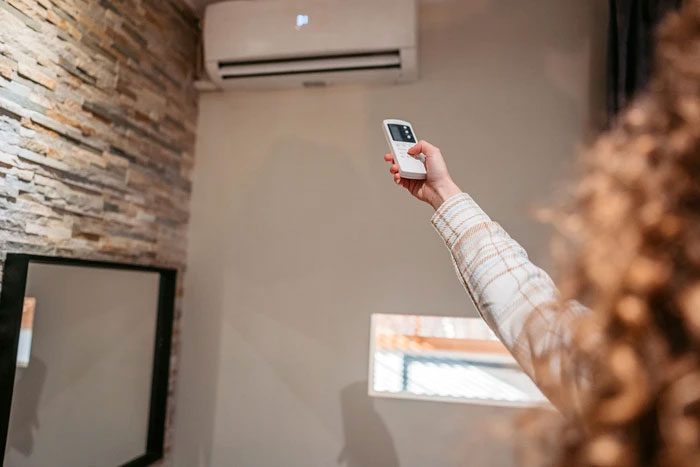Air conditioning can cause headaches, nausea, or fatigue in some individuals for various reasons. Dehydration, noise, allergens, and temperature can all play a role.
How to Reduce Headaches and Fatigue While Using Air Conditioning
During the summer months, air conditioning is an essential cooling device, especially during peak hot days when people often habitually turn on the air conditioning all day long. However, some individuals frequently experience headaches, dizziness, nausea, and fatigue while in an air-conditioned environment. What causes this condition? How can it be remedied?
1. Causes of Headaches and Fatigue from Air Conditioning
There are several reasons that can lead to headaches, nausea, and fatigue when using air conditioning, including:
Dehydration
Dehydration can lead to headaches because the brain temporarily shrinks due to fluid loss, and air conditioning can contribute to this dehydration. When the air conditioner operates, it not only cools the indoor air but also extracts moisture from it. Therefore, if you stay in an air-conditioned environment for too long without adequate hydration, your body is likely to become dehydrated, leading to dry skin, nose, throat, etc. This can result in discomfort.
Low Temperature
When you feel cold, the blood vessels in your body constrict to help retain heat. When the blood vessels in the brain constrict, it can lead to headaches and discomfort. Thus, if the air-conditioned room is set to a very low temperature, your body can quickly react to the cold, leading to headaches and fatigue.

Setting the air conditioning temperature too low can lead to headaches and discomfort. (Image: ST).
Noise from the Air Conditioner
An air conditioner that is not regularly maintained can produce intermittent or repetitive noise. This can lead to headaches due to stress or trigger migraines.
Air Conditioner Containing Dust and Irritants
A poorly maintained air conditioner can harbor a lot of dust, mold, and bacteria. When operating, the air conditioner blows these irritants into your living and working space. Additionally, chemicals from cleaning products, construction materials, paint, or other sources can cause problems if your home lacks proper ventilation. Your air conditioning system will continue to circulate these irritants or toxins throughout your indoor spaces multiple times.
If this situation continues to recur, not only will you experience headaches, nausea, or fatigue due to exposure to irritants, but individuals with asthma, allergies, etc., may also experience a recurrence of symptoms or worsening conditions.
You may not know that indoor air can appear clean, but according to the Environmental Protection Agency, it can contain pollutants at levels 2 to 5 times higher than outdoor air.
2. Remedies for Headaches and Fatigue While Using Air Conditioning
Headaches, nausea, or fatigue while using air conditioning can be easily remedied by:
- Leaving the air-conditioned room and finding a cool, airy, quiet place to rest until you feel comfortable. Opt for a natural environment, avoiding overly bright light or artificial lighting, as this can exacerbate headaches and fatigue.
- Replenishing fluids in your body.
- Gently massaging your head.
If these methods do not improve your condition, you may consider using over-the-counter pain relief.

Avoid prolonged use of air conditioning to reduce headaches and fatigue.
3. How to Prevent Headaches and Fatigue While Using Air Conditioning
In fact, air conditioning does not harm health if used correctly; it can make us feel more comfortable during hot days. To avoid headaches, fatigue, or nausea while using air conditioning, individuals should pay attention to the following:
- Avoid using air conditioning for too long; it is recommended not to use it continuously for more than 4 hours at a time. Once the room has cooled down, you can turn off the air conditioning and switch to using a fan.
- Regularly clean the air conditioner to prevent dust and mold accumulation inside that can be released into the space.
- Use a humidifier to prevent dehydration; furthermore, while in an air-conditioned environment, you should regularly replenish fluids in your body.
- Keep the temperature at a suitable level; set the temperature between 26 to 29 degrees Celsius, depending on the time of day, meaning you should set it higher at night when the temperature drops. Avoid setting the temperature too low, as this can not only cause headaches but also pose other risks, such as facial nerve paralysis and affecting muscle movement in the facial area.
- Stay away from the air conditioner; do not let any part of your body, especially your head, neck, or upper respiratory area, come into direct contact with the airflow from the air conditioner.
Giant Sinkhole Appears in China After Heavy Rain


















































